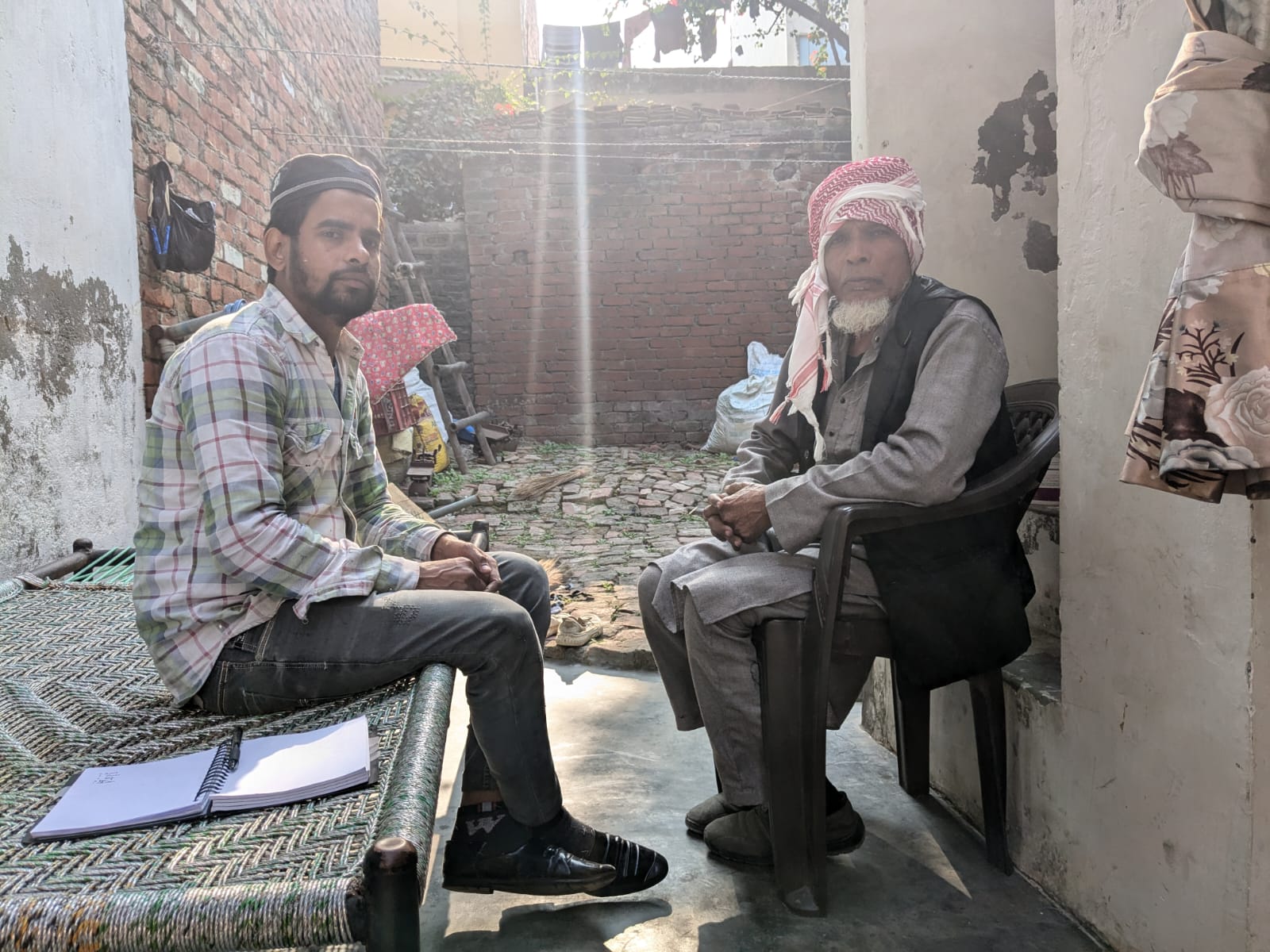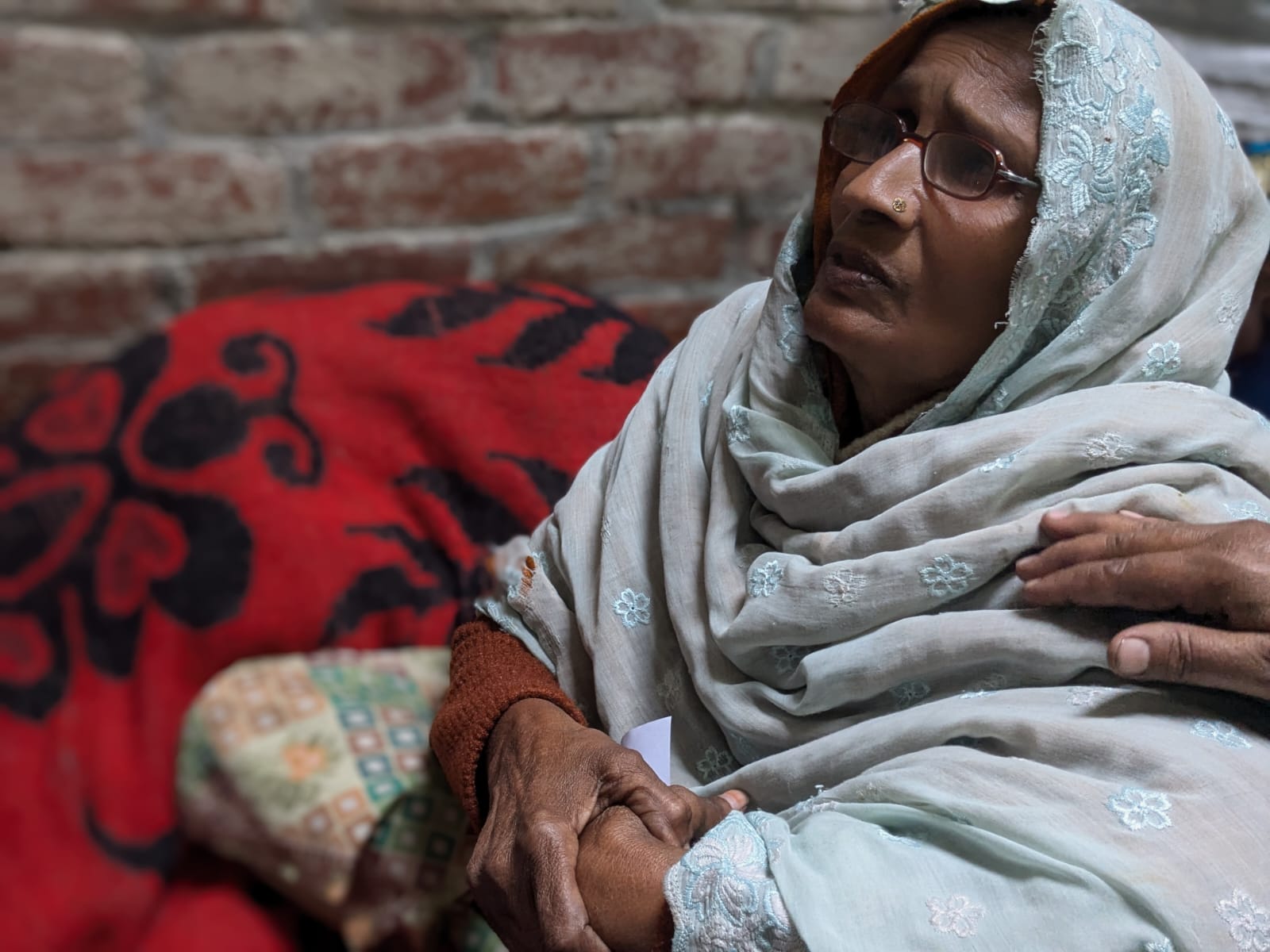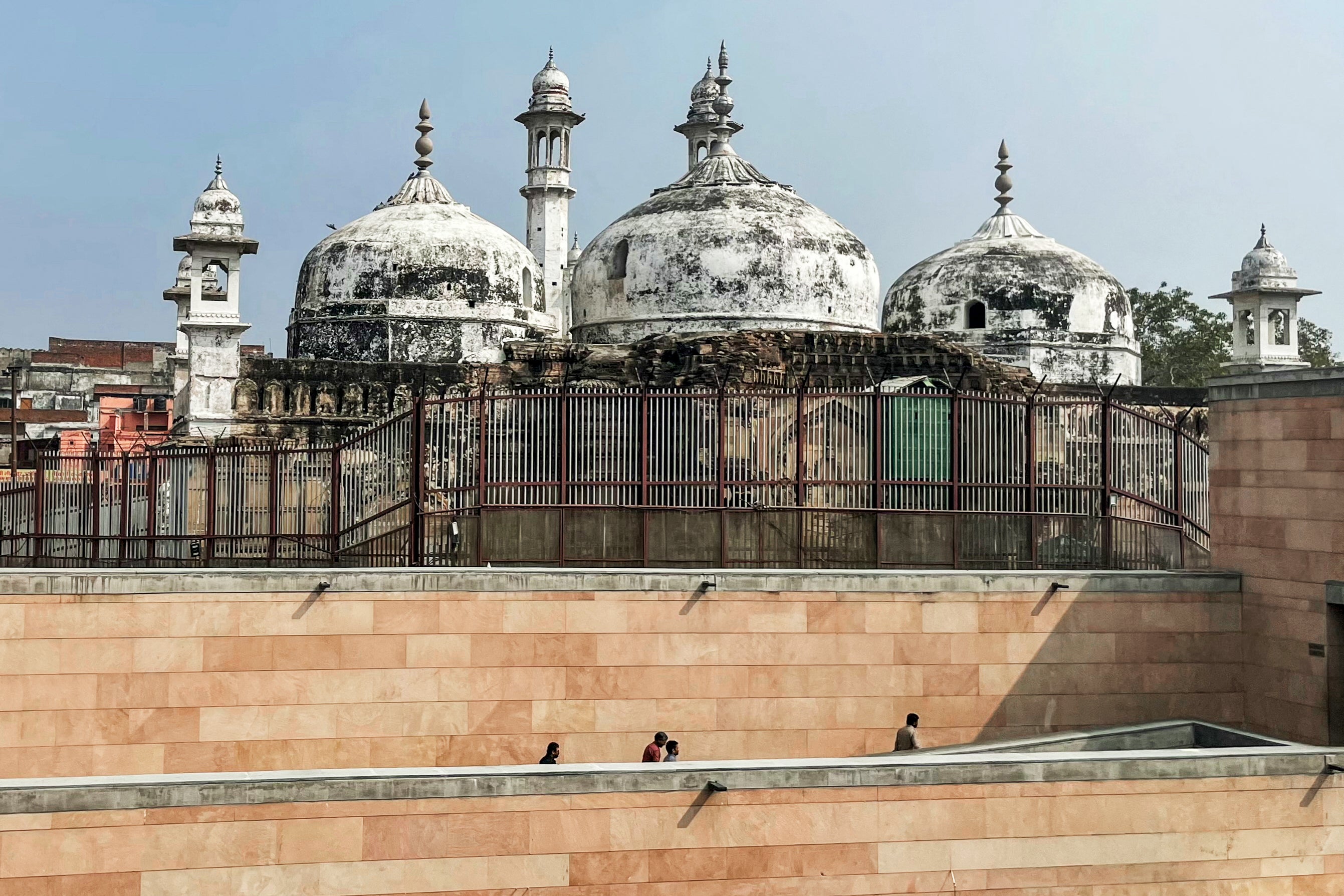Mohammad Bilal was on his way to his clothing shop in Sambhal, a small city in Uttar Pradesh, when violence erupted near the city’s centuries-old Shahi Jama Masjid. He called his brother to tell him he had been shot.
That day – 24 November last year – was the last time his older brother, Mohammad Salman, 24, heard from him. “My brother told me, ‘I was coming home when people started pelting stones. The police were firing blindly at the crowd. They shot me, too,’” Salman tells The Independent in an interview in Sambhal.
Hours later, Bilal was dead at a hospital in Moradabad – one of five men killed in clashes that left at least 20 police officers injured and several vehicles torched in some of the worst violence the area has seen in recent times last year.
In Sambhal, the violence marked an alarming shift. At the centre of the unrest was a court-ordered archaeological survey of the Shahi Jama Masjid – a 16th-century mosque now claimed by Hindu petitioners to have been built on the ruins of a temple.
The dispute in Sambhal isn’t isolated. It is part of a broader wave of legal challenges to Muslim places of worship across India – a movement some see as a deliberate attempt to rewrite history and alter the religious character of public spaces in favour of the Hindu majority.
A growing number of Hindu groups are filing petitions alleging that historic mosques stand on top of desecrated Hindu temples. These claims often hinge on vague local lore or unverified archaeology, but they’re finding more traction in courts than ever before.
Many of these legal cases cite an exception within the Places of Worship (Special Provisions) Act of 1991, which was meant to freeze the religious status of all places of worship as they existed at the time of India’s independence – with one notable exception: Ayodhya.
On 19 November, a civil court in Sambhal ordered a survey of the Shahi Jama Masjid, following a petition that alleged the mosque was built in the year 1526 on a destroyed Hindu temple.

“This is something the whole of Sambhal knows — that there was a Hari Har temple beneath the mosque,” says Mahant Rishi Raj Giri, the main petitioner seeking an Archaeological Survey of India probe. Giri, who heads the right-wing International Hari Har Sena, claims: “Both Hindus and Muslims here are aware of it.”
Members of Muslim groups in the area have expressed anger, claiming they were not notified about the survey and questioning the urgency with which it was carried out, while many contest the claim of a temple under the mosque.
“We are only hearing about this Hari-Har temple now,” says Sanjay, a cloth merchant who works near the mosque. “The murmur started only after the BJP came to power.”
That was in 2014, when Narendra Modi’s Hindu nationalist Bharatiya Janata Party (BJP) won a historic mandate.

For many Indian Muslims, the Sambhal mosque dispute echoes a dark moment in the country’s recent history – the demolition of Babri Masjid in 1992.
The 16th-century mosque in Ayodhya was razed to the ground by Hindu mobs, spurred by decades of political and religious mobilisation. The violence that followed killed over 2,000 people. It was a blood-soaked turning point in India’s secular fabric.
In 2019, the Supreme Court of India delivered a final judgment on the Ayodhya case. The court acknowledged the illegal demolition of the mosque but still handed over the land to Hindu petitioners to build a grand temple to Lord Ram, inaugurated by Mr Modi in January 2024.
The verdict created shockwaves.
“The Ayodhya judgment was a very low point in the history of the Supreme Court,” says Colin Gonsalves, a senior advocate and founder of the Human Rights Law Network. “It betrayed the minority community and allowed hooliganism to prevail.”
Yet the court also tried to draw a line, he explains: “The judges tried to control the damage by saying ‘thus far and no further.’ They said the Places of Worship Act remains in place – and no other mosque can be targeted.”
“And that any attempt after that to identify any other mosque, to say that this has a Hindu origin, and to seek relief from court to break to tear down that mosque and so on – those would be illegal and unconstitutional. They upheld the Act. Everything else got frozen.”
The violence in Sambhal is just the latest in a series of incidents showing that line is being crossed.
In May 2022, a Supreme Court bench led by then-Chief Justice DY Chandrachud allowed an archaeological survey of the Gyanvapi Mosque in Varanasi, despite concerns it violated the Places of Worship Act.
The judge clarified that the 1991 law didn’t bar investigations into a site’s status as of 15 August 1947, so long as they didn’t seek to change its character. This emboldened Hindu nationalist groups, who claim the mosque was built over a temple in 1678.
A later survey reportedly uncovered a shivaling – a symbolic representation of the Hindu deity Shiva – inside the mosque, though mosque officials insist it’s part of a fountain.
Then on 19 November 2024, a civil court ordered a survey of the Shahi Jama Masjid based on Mahant Rishi Raj Giri’s petition. He claimed the mosque, built in 1526, stood atop a demolished Hari Har temple. On 24 November, during the second court ordered survey, clashes broke out.
Advocate Gonsalves blames the “complacency of the Indian judiciary” for the spiralling situation as he questions its “independence”.
“The judiciary was itself responsible for this kind of introduction of the loophole,” which far-right wing groups in the country promptly took as an invitation to create trouble again in respect of other [religious] structures.
Muslims in the Sambhal say they weren’t even notified of the survey. “It felt like a sudden ambush on our identity,” says a local youth leader, who asked not to be named.

The clashes in Sambhal have reignited fears of further violence, raising questions about the judiciary’s role in exacerbating communal tensions, now supported by the state government.
Bilal’s brother, Salman, alleges police harassment after they accused officers of shooting his brother in their First Information Report (FIR). “They pressured us to remove the police’s names, threatening arrest,” Salman says. “They warned us it would cost us heavily if we didn’t retract.”
“The fear was unbearable—we couldn’t sit, eat, or sleep. The police barged into our home, harassing us,” he adds. His mother, Shahana Begum, 45, recalls, “One day, they came inside, threatening to call the women’s police. This went on for days. I was terrified, worrying that my son had already been killed and now they were harassing us.” She breaks down, “When we removed the police names from the FIR, the harassment stopped.”
Nafeesa Begum, 65, claims her 18-year-old son Mohammad Ayan died from police gunfire. Describing the day, she says, “Ayan’s hotel was near the mosque. I don’t know what happened, but at 9am, people came shouting that Ayan had been shot.”
“I ran outside and saw him on a charpoy, blood pouring from his body. I could barely stand. I asked, ‘What happened?’ He said, ‘Ammi, I was running with the crowd, fell, and realized I was shot. The police were firing.’”
Ayan later died from his injuries, reportedly a bullet wound in his abdomen. Nafeesa says, “Since then, people, including the police, pressured me not to mention the bullet injury. They told me to say we didn’t know what happened in the crowd, but I couldn’t. My son told me he was shot by the police, and he was a Quran reader. What should I tell him in the afterlife?”
Autopsy reports suggest the victims died from bullets fired from country-made pistols, according to national media. Sambhal’s divisional commissioner, Aunjaneya Singh, stated, “Most deaths were caused by firearm injuries, likely from 315 bore bullets—fired from country-made pistols. Police mainly used pellet guns to disperse the crowd. Whether other protesters’ bullets caused the deaths is under investigation.”
Across India, several high-profile mosques and Islamic shrines are now under scrutiny. Among them:
- Gyanvapi Mosque (Varanasi, Uttar Pradesh): Claimed to be built over a demolished temple to Lord Shiva. Ongoing litigation since 2021.
- Shahi Idgah Mosque (Mathura, Uttar Pradesh): Built in the 17th century, now contested by groups who say it encroaches on Lord Krishna’s birthplace.
- Ajmer Sharif Dargah (Rajasthan): A 16th-century Sufi shrine that recently faced demands for a survey by right-wing groups.
On 27 November, a court in Ajmer admitted a petition by Vishnu Gupta, national president of the Hindu Sena, seeking a survey of the Ajmer Sharif Dargah, claiming evidence of an ancient Hindu temple to Lord Shiva at the site. The court issued notices to the Ministry of Minority Affairs, the Archaeological Survey of India (ASI), and the Dargah Committee.
Gupta’s counsel cited a 1911 book, Ajmer: Historical and Descriptive, claiming debris from a Hindu temple was used in the dargah’s construction, including a shivalinga previously worshiped by a Brahmin family. Gupta tells The Independent, “A tomb cannot be a place of worship in Islam. We demand no one should offer namaz there.”
The Hindu Sena, a far-right group with a history of criminal cases, claims to oppose “Islamisation” and fight for “Sanatana Dharma”. Gupta denies accusations of fueling division, asserting, “How has seeking justice become a source of social disharmony?” He adds, “Hindus have been exploited for 300 years. We want our land back.”

The escalation of such disputes has also drawn criticism from historians and legal experts who argue that these cases distort India’s complex historical legacy.
“Desecration of such temples [royal] was the normal means of detaching a defeated enemy from the most prominent manifestation of his former sovereign authority, thereby rendering him politically impotent,” Richard M Eaton, professor of history at the University of Arizona and author of India in the Persianate Age: 1000-1765 told The Diplomat.
Referring to the quote, historian Rana Safvi tells The Independent : “One cannot right ‘perceived’ or real historical wrongs on the basis of oral stories, popular narratives or even historical sources.
“Today as the world’s largest democracy our challenges are different and our responses should be in accordance with that. It is up to the courts to uphold the constitution and the rights of minorities.”
The Allahabad High Court, while ordering ASI survey of Gyanvapi mosque, ruled: “Scientific survey is necessary in the interest of justice.” Yet critics contend that these surveys serve less to uncover historical truths and more to stoke communal divisions.
In Sambhal, the aftermath of the violence has left a community grappling with grief and uncertainty. Mohammad Salman mourns his brother’s death and questions the motives behind the survey that triggered the clashes.
“Why was it necessary to conduct this survey in secret, without informing us?” he asks. “My brother died for nothing – simply because of politics.”




